Intro to Drawing Birds
Instructor: Catherine Hamilton
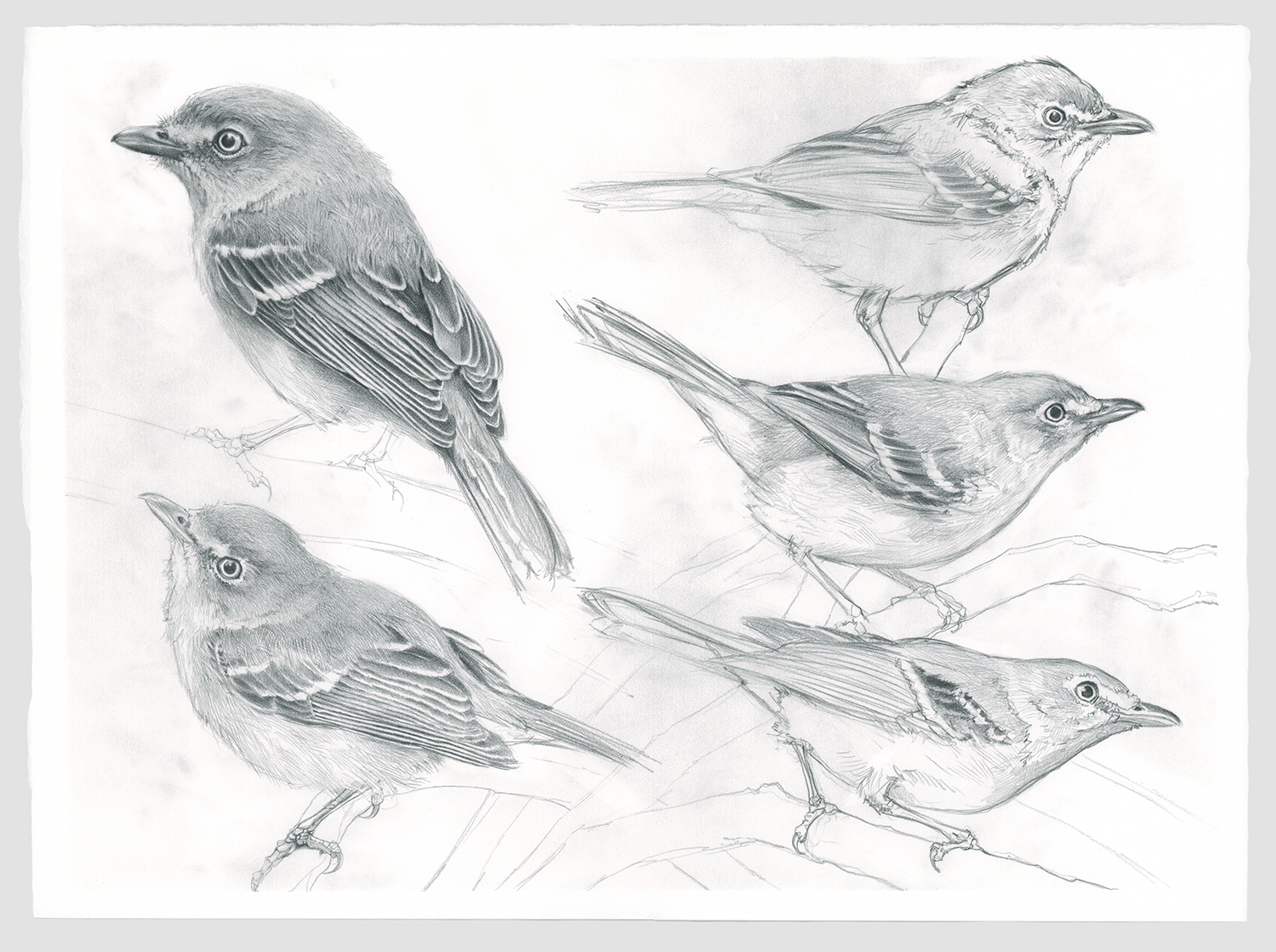
Drawing by Catherine Hamilton.
Open to beginners and experienced artists alike, this classroom-based workshop will provide tips and techniques for approaching bird drawing. Guided warm up exercises, helpful beginning processes, and elucidation on bird anatomy will be provided and explored. Some basic color mixing in watercolor, specific to bird palettes, is scheduled for those who would like it. Participants bring their own materials, and a basic materials list will be emailed ahead. Even just a sketchpad and pencil can work!
Capacity: 10
Schedule: Saturday, 9/21 from 8:30am - 12:00pm (will likely run to 12:30)
Location: Pasadena Audubon Society 75 S Grand Ave Pasadena CA 91105 (map)
Class Fee:
$75 - Pasadena Audubon Members
$85 - Non-members (includes one-year membership)
$45 - Children (under 18)
Intro to Birding
Instructors: Mickey Long and Jon Fisher
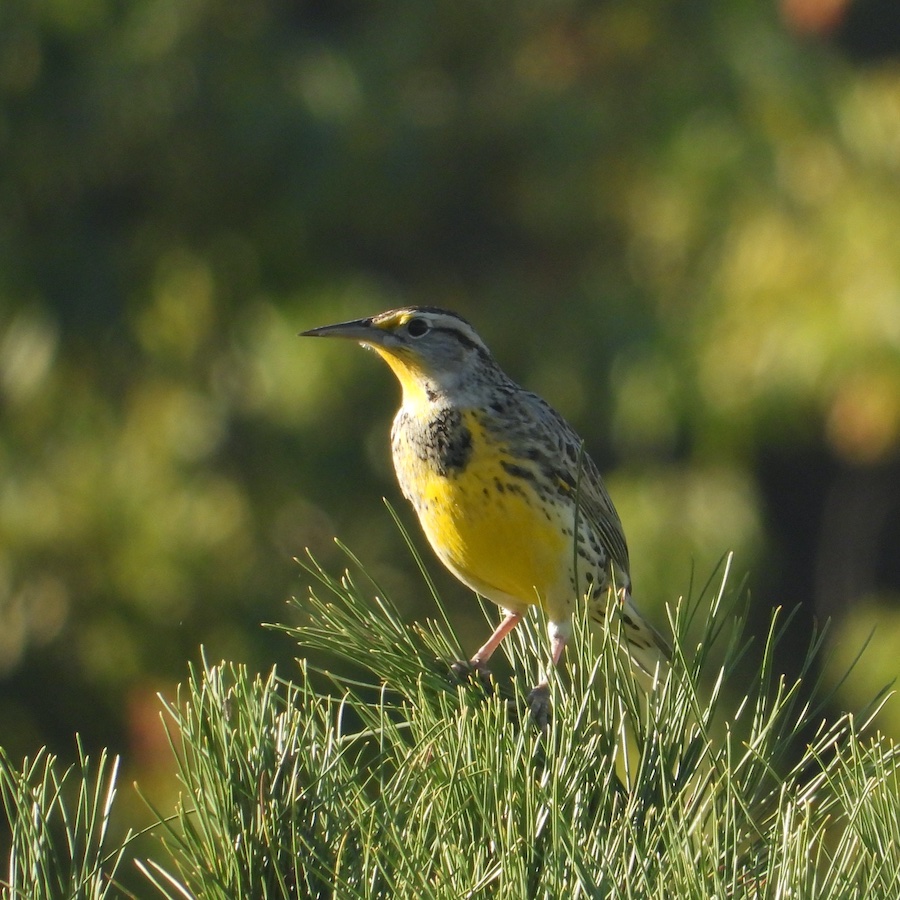
Western Meadowlark (Sturnella neglecta).
Birds are fascinating, varied, beautiful, and can be found almost anywhere. They make great subjects for nature study. The phenomenon of migration and vagrancy only adds to their appeal.
That said, stepping into the world of birding can be daunting and overwhelming. There is a lot to learn. If you’re interested in birds and birding but don’t quite know how to get started, this course is for you. And if you’re not quite a neophyte, but still in the early stages of your birding journey, this course will offer a wealth of useful information.
Beginning birders face a steep learning curve and have many questions. Where should I go to watch birds? What equipment do I need? How do I start to build my birding library? How do I begin to learn to identify over 400 species? How can I get the most out of my birding?
With decades of birding experience between them, Mickey and Jon will answer these questions and many more. They will offer insights, tips and information about all things birding.
Among the topics covered will be books, birding optics, cameras, clothing, eBird, habitats and birding locations. The identification of local birds will also be a major focus, both in the classroom sessions and on the field trips.
This course aims to provide all the information you’ll need to enjoy birding while keeping it entertaining and fun.
About the instructors:
Mickey Long retired in 2010 as Natural Areas Administrator over 19 Los Angeles County Natural Areas and Wildflower Sanctuaries, and has a BS in Zoology from California State University Los Angeles. He teaches natural history classes for the Nature Centers, has led numerous birding and other field trips. He has been an active birder for 5 decades and has research interests and publications in ornithology, herpetology and botany. Mickey also is past President, Vice Pres. and Conservation Chair for the Pasadena Audubon Society. He now chases birds, butterflies, and lizards around, and says teaching natural history classes is one of his most rewarding endeavors.
Jon Fisher has been birding for well over thirty years. He has been the compiler for the Pasadena-San Gabriel Valley Christmas Bird Count for nearly that long. He also writes the "Birds of the Season" column appearing in the Western Tanager newsletter and has compiled the Los Angeles Rare Bird Alert each week for over two decades. He has presented a number of bird identification workshops for Pasadena Audubon over the years (many of these with Mickey Long) and also led numerous field trips. His main interests are the identification and distribution of southern California birds. That interest has expanded to include photographing birds for the past fifteen years.
Capacity: 25
SCHEDULE
In-person Class:
Mondays on 10/14, 10/21, and 10/28 from 6 pm to 8 pm
Location: Burbank REI at 1900 Empire Ave, Burbank, CA 91504 (map)
Field trips:
Schedule: Saturdays on 10/19, 11/2 from around 7 am to 11 am
Location: Within the Greater Pasadena area
Participants are encouraged to take all classes for comprehensive learning.
Class Fee:
$100 - Pasadena Audubon Members
$125 - Non-members (includes one-year membership)
$45 - Children (under 18)
Botany for Birders
Instructor: Mickey Long, Field Biologist and former Natural Areas Administrator, L.A. County Parks & Recreation
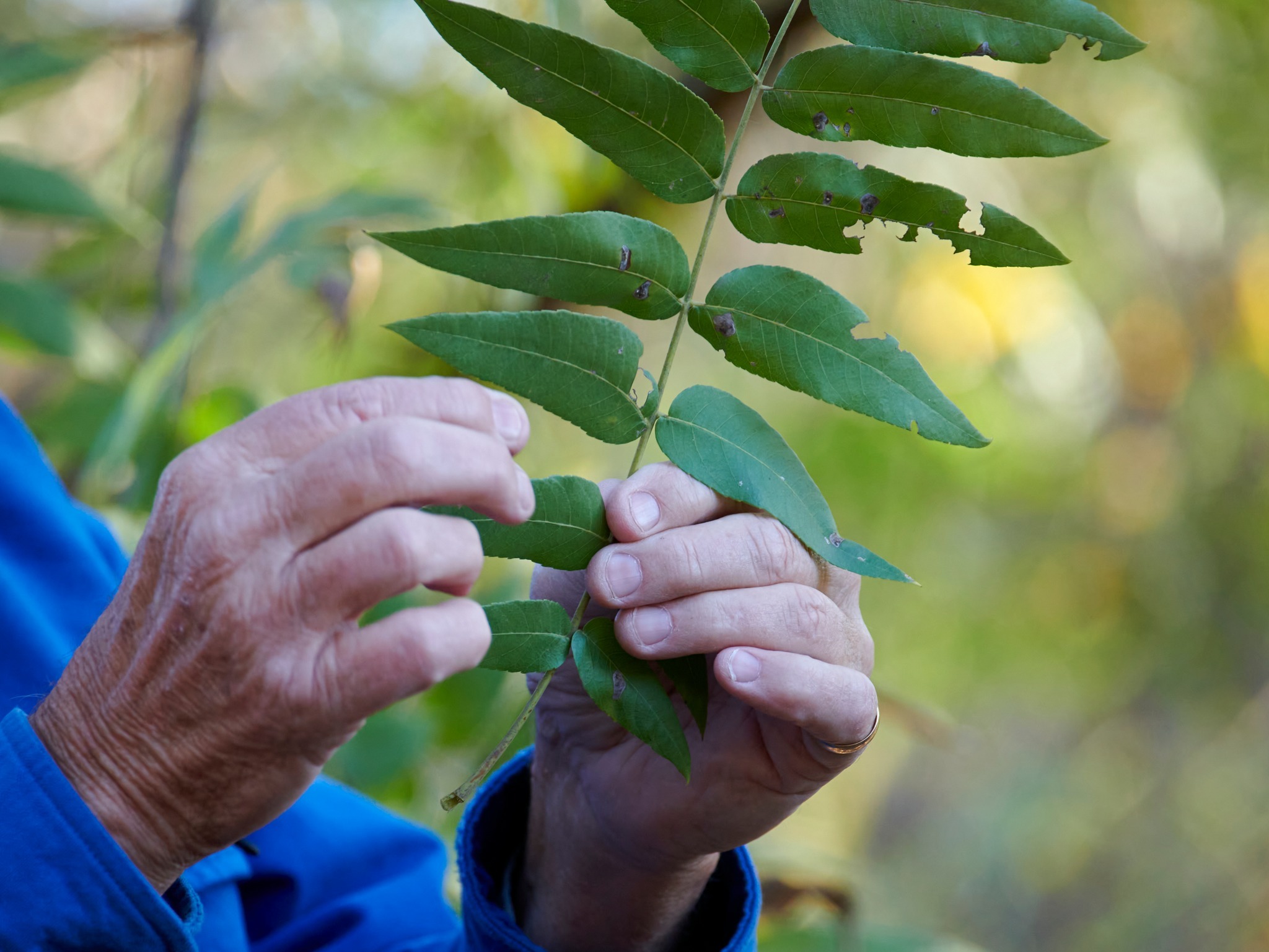
PHOTO: Tom Mills.
This is a class first innovated and offered in 2011 and asks the question: “would you like to know more about plant identification and ecology to improve your knowledge, communication skills and enjoyment of birds in their ecosystems?” These classes and field trip will provide illustrated examples and hands-on samples of plants from Southern California habitats, including; valleys, foothills, mountains, and deserts. Both native and common non-native trees and shrubs will be included, but we will stick to most important, indicator species for bird habitat. This is not an exhaustive plant ID class.
Learn:
- Dominant trees and shrubs that provide common perches for birds. Rather than say “it’s in that big tree toward the middle,” you can say “it’s in the sycamore, just left of the ash.”
- Important food plants, berries, seeds. In what plants do I look for Pine Siskins in Fall or Swainson’s Thrushes during May migration?
- What warblers tend to use conifers and which are most likely in deciduous trees.
- Where to really look for a California Gnatcatcher, a Cactus Wren, or a Least Bittern based on vegetation indicators.
- Recommended books and other sources for identifications and further study.
When:
In-person Class:
Schedule: Thursdays on 11/14, 11/21, from 6 pm to 8 pm
Location: PAS Headquarters (75 S Grand Ave, Pasadena, CA 91105) (map)
Field trip:
Schedule: Saturday, 11/23, from 8 am to 11 am within the Greater Pasadena area
Location: Within the Greater Pasadena area
Capacity: 20
Participants are encouraged to take all classes for comprehensive learning.
Previous classes
Tips and Techniques for Field Sketching
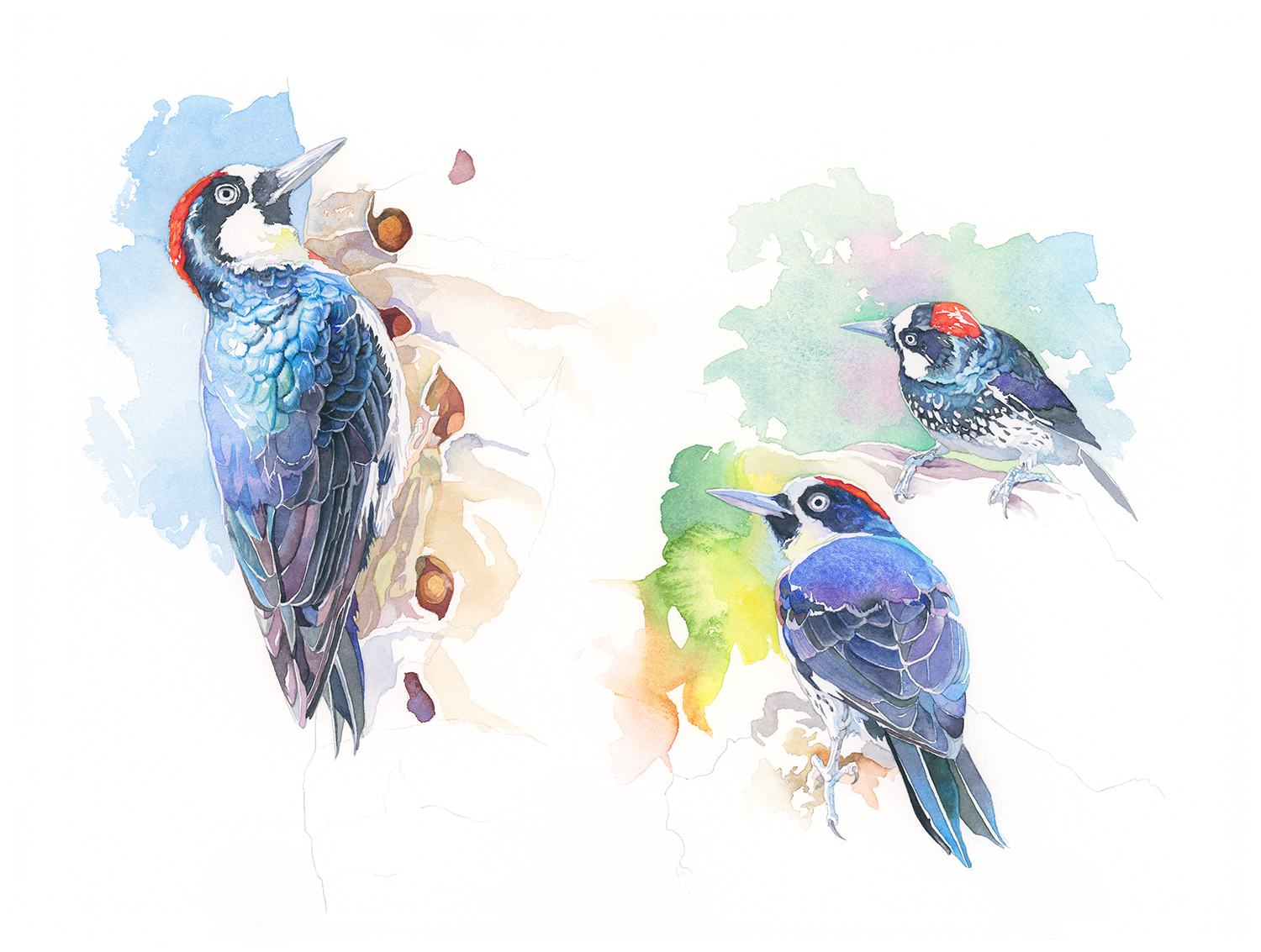
In this sit-down class, Catherine Hamilton will introduce and demonstrate approaches and materials to advance sketching and painting techniques when in the field, with the idea that a little extra practice will prepare you for a freer and looser approach once outside.
Exercises and demonstrations will guide you through a step-by-step process to build confidence and learn to have fun with your materials! This introductory class will cover working with pencils, pens, and watercolors. A basic materials list will be provided for the class, but there will also be many examples of materials and kits on hand for inspiration.
Instructor
Catherine Hamilton
In-person class schedule:
Saturday, 3/9, from 9 am to 2 pm
Location:
75 S Grand Ave, Pasadena, CA 91105
Class Fee:
Current PAS Members: $45
Non-Members: $65
Children (Under 18 years): $15
How Birds Work
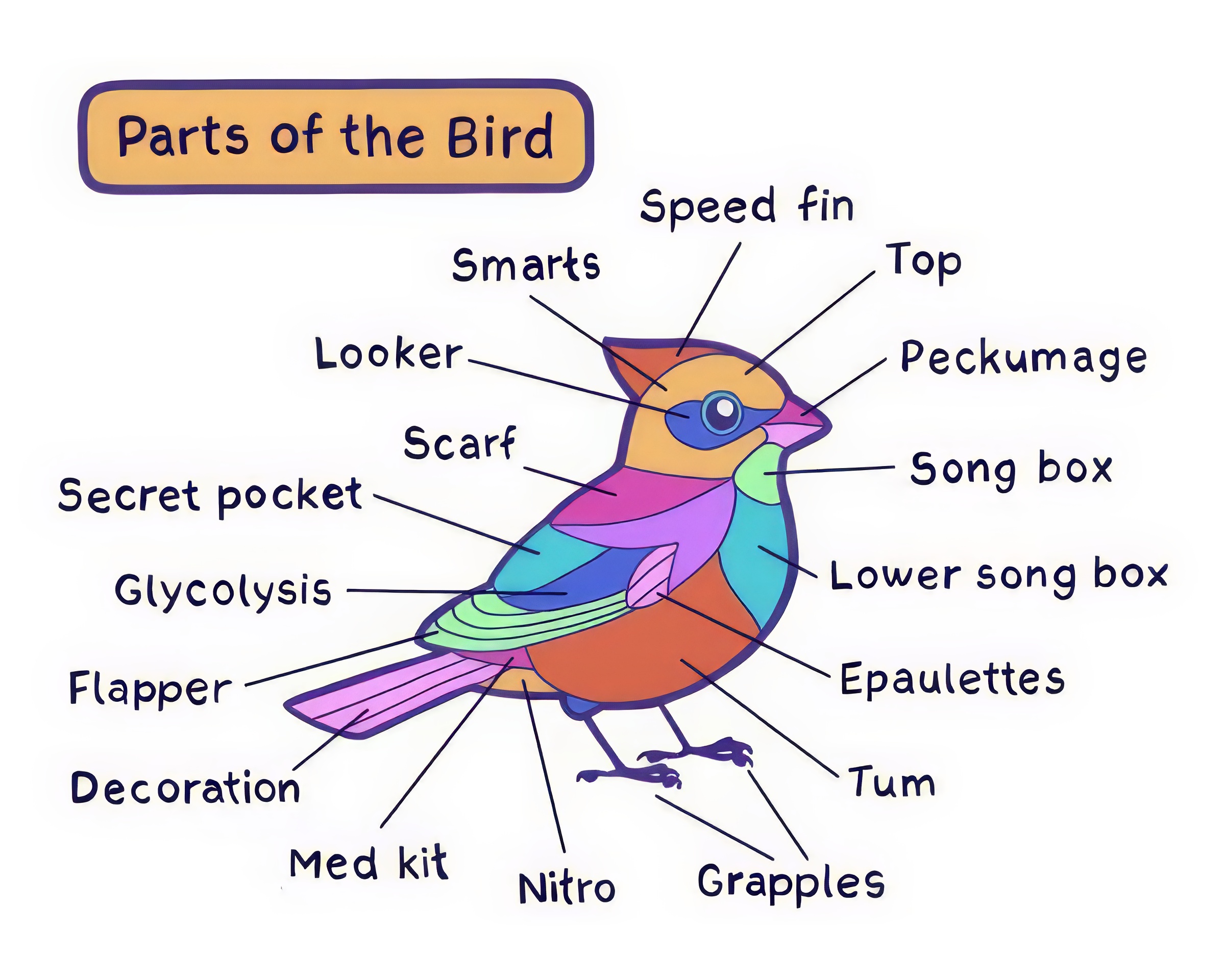
Illustration by Rosemary Mosco
Sure, you love birds. But how much do you know about how birds actually function? In this fun introduction to bird biology, we’ll learn about the unique circulatory, respiratory, digestive, and reproductive systems of our feathered friends.
By the end of the class, you’ll know the answers to such timeless bird questions as:
* How can a duck stand on a frozen lake all day and not freeze its feet off?
* How can a crane fly higher than Mount Everest and not pass out?
* Which end of the egg comes out of a bird’s butt first?
* Why is bird poop white instead of brown?
Instructor:
Chris Spurgeon is the Program Chair of Pasadena Audubon. He studied avian biology at the University of Maryland (famed for its poultry science program) and helped study gull vocalization at the Smithsonian Institute National Zoo in Washington.
Fun fact: Chris swears he got straight A's in all his avian physiology classes!
When:
Two Thursdays evenings, 2/22 & 2/29, 7 pm - 9 pm
Where:
Pasadena Audubon offices, 75 S Grand Ave, Pasadena, CA 91105 (MAP)
Cost:
* PAS Members: $75
* Non-Members: $100
* Young Birders (under 18 years): $20
Class is limited to 20 people.
Field Sketching Fridays
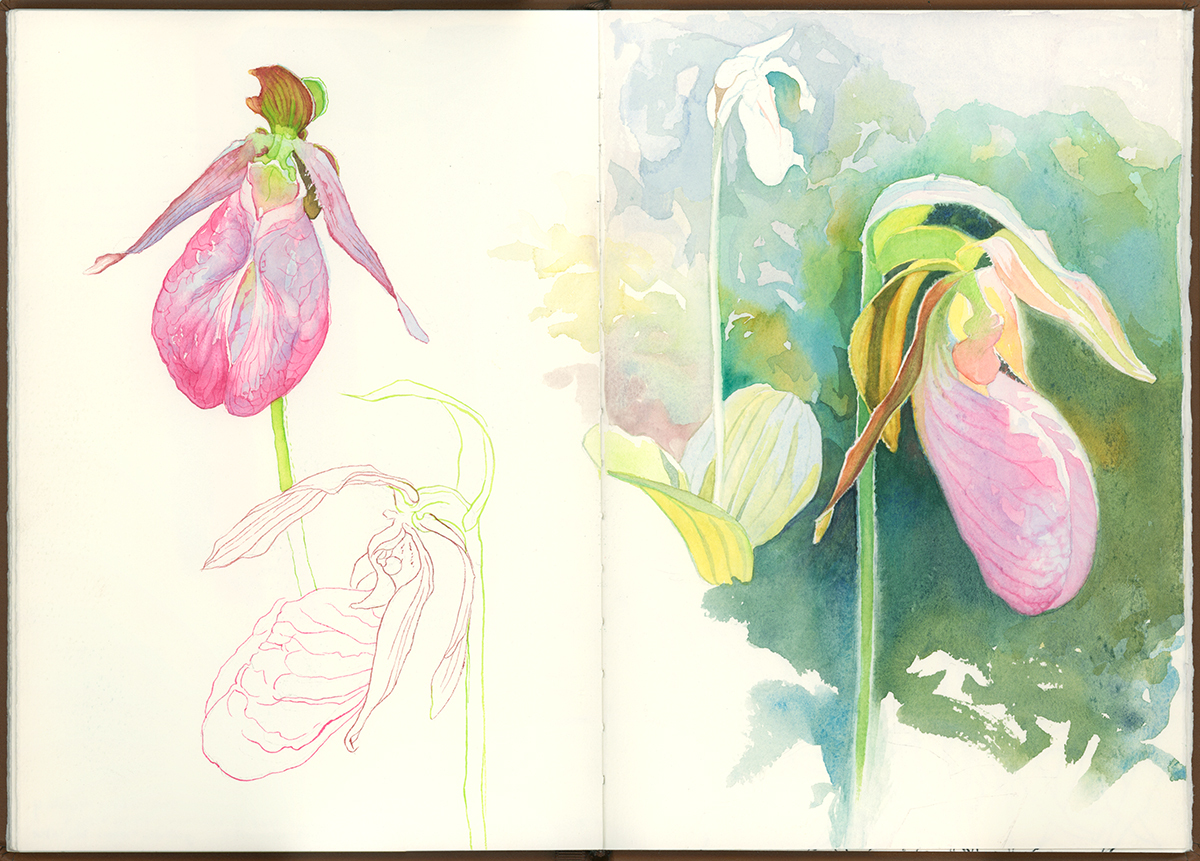
The Pasadena Audubon Society is excited to announce a new series of LA based field trip workshops with noted artist Catherine Hamilton.
Come one, come all (with a group size limit), for camaraderie or instruction, as you see fit. We will explore different natural spots in the LA County area, and draw anything or everything we encounter. Site specific and media based exercises will be offered for each session, but instruction is entirely optional. Materials lists and meet up locations will be provided in advance.
The full series spots are now full! Limited free spots are offered monthly on a first come, first served sign-up basis. Sign up for our email updates to stay up to date! Please note: Due to limited capacity, each individual may register for a maximum of two seats. If all seats are already taken, you will have the option to join a waitlist for free spots of the month.
The trips will occur once every two weeks, and we will meet on-site on Friday mornings around 7:30 am.
The Language of Birds
Instructor: Hanaa Zerroug
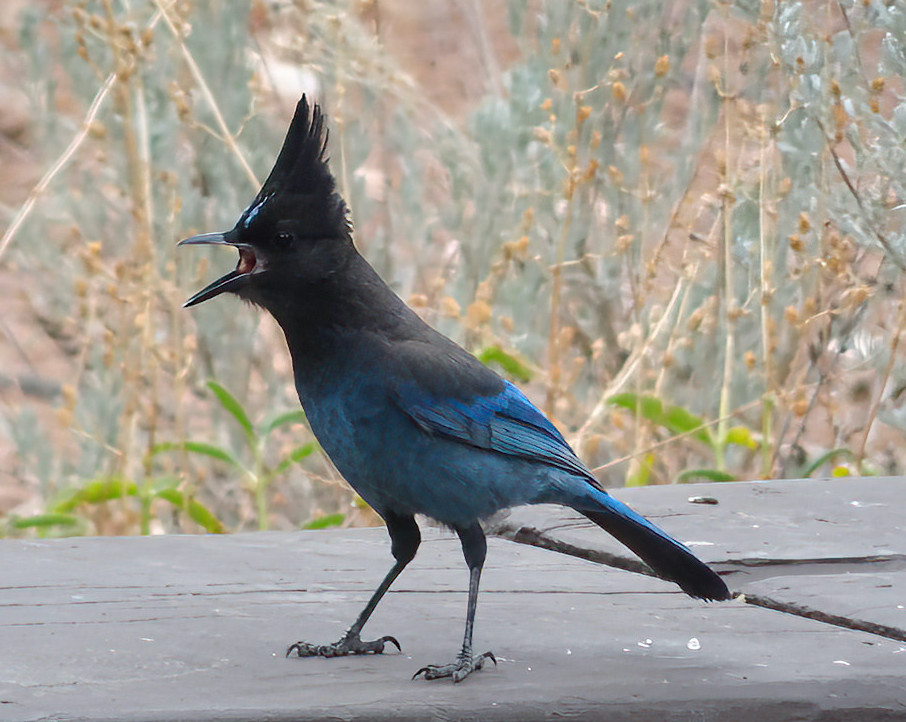
Steller's Jay (Cyanocitta stelleri) singing. Photo by Lois Brunet.
The beauty of birds has propelled their pursuers to march the earth with heavy equipment in search of the perfect pose, wild backdrop, and accent of light upon brilliant feathers. Yet it seems that many of us admirers underemphasize or even shy away from the equally rich world of the many bright, colorful, and intriguing sounds of our subjects!
And even then, the whole singular beauty of birds has yet to be exhausted: their behavioral quirks, evolutionary histories, and roles in ecosystem dynamics are full of refreshing wonders and surprises that any birding excursion can unfold with a more inclusive observation. In this 4-part lecture and field trip series aimed for all levels (especially helpful for beginners and those who wish to improve their listening skills), we will first be introduced to the technicalities of bird sounds, simple tools, techniques and modes of thinking to better notice, identify, and remember bird sounds, and will be acquainted with the never-ending challenges that accompany birding by ear.
Next, we will delve into the expansive world of bird language, the ancient and multifaceted study of bird sounds and accompanying behaviors as signals of environment states. We will grow to understand birds beyond their individual and species bounds, as pearls of a large and complex web of interspecies communication in the wake of shared conditions that limit survival and reproduction. The practice of using more of our senses will sharpen our awareness of the birds beyond their titles, images, and even repertoires- leading us to ask more questions about what a bird is doing, why, and its never-ending preoccupations often invisible to us.
Format:
Two two hour classes, and two field trips. evening classes.
Class limited to 20 people. Participants are asked to make all sessions.
About the instructor:
Hanaa Zerroug is a budding ornithologist, botanist, and ecologist (she can’t choose) with a deep enthusiasm for evolutionary relationships, bird behavior, and the interconnectedness of nature. She has had the rather arcane privilege of looking deeply into the lives of various birds as a volunteer bird rehabilitator, from hummingbirds to finches to hawks and owls. She is also an art student and wishes to delve into the world of scientific illustration. She loves to help others see their innate potentials in the sciences and hopes to someday make a discovery in her fields of interest.
Raptor Field Identification
Instructor: Bill Clark
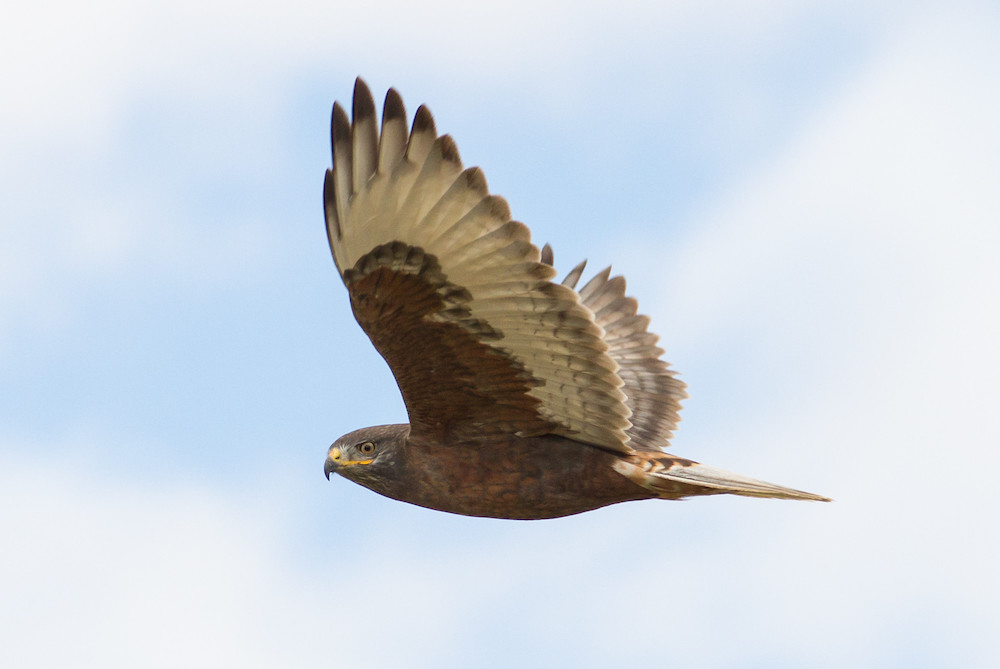
Ferruginous Hawk (Buteo regalis). Photo by Luke Tiller
Hawks and eagles are among the largest and most spectacular of all birds, but they can also be some of the most challenging to identify. Let renowned raptor expert Bill Clark demystify things for you! This one weekend workshop will give you all the tools you need to take your raptor identification skills to the next level.
Saturday's all-day class will take you from the basics of field marks through the specific details of individual North American accipters, buteos, eagles, and falcons. Then on Sunday practice what you've learned as you look for raptors throughout the Antelope Valley.
When:
Saturday, February 25, 2023, from 9:00 AM to 4:00 PM, & Sunday, February 26, 2023, all day
Where:
Saturday class location TBA (but in the Pasadena area)
Sunday field trip locations throughout the Antelope Valley
About the instructor:
Bill Clark is a photographer, author, researcher, and lecturer and has over 50 years experience working with birds of prey, including 5 years as Director of
NWF's Raptor Information Center. He has published numerous articles on raptor subjects; has traveled extensively world-wide studying, observing, and
photographing raptors; and regularly led raptor and birding tours and workshops, both home and abroad, with Raptours, which is now being run by
his colleague, Sergio Seipke. Bill is on the board of directors.
He has been living in the Rio Grande Valley since 2002. He regularly teaches evening and weekend courses on raptor field identification and biology and frequently presents lectures on raptor subjects. Bill has written a raptor field guide for Europe, another for Mexico and Central America and yet another for Africa. He is a coauthor of The Photographic Guide to North American Raptors and the completely revised Peterson series guide, Hawks.
He has on-going research projects on Harlan’s Hawk, White-tailed Hawk, and Harris’s Hawk.
Cost:
$145 - Pasadena Audubon Members
$170 - Non-members, this includes a PAS membership
$20 - Young Birder, under 18 years
Intro to Drawing Birds
Instructor: Catherine Hamilton

Drawing by Catherine Hamilton.
Open to beginners and experienced artists alike, this classroom-based workshop will provide tips and techniques for approaching bird drawing. Guided warm up exercises, helpful beginning processes, and elucidation on bird anatomy will be provided and explored. Some basic color mixing in watercolor, specific to bird palettes, is scheduled for those who would like it. Participants bring their own materials, and a basic materials list will be emailed ahead. Even just a sketchpad and pencil can work!
Capacity: 10
Schedule: Saturday, 9/21 from 8:30am - 12:00pm (will likely run to 12:30)
Location: Pasadena Audubon Society 75 S Grand Ave Pasadena CA 91105 (map)
Class Fee:
$75 - Pasadena Audubon Members
$85 - Non-members (includes one-year membership)
$45 - Children (under 18)
Sign up here!
Intro to Birding
Instructors: Mickey Long and Jon Fisher

Western Meadowlark (Sturnella neglecta).
Birds are fascinating, varied, beautiful, and can be found almost anywhere. They make great subjects for nature study. The phenomenon of migration and vagrancy only adds to their appeal.
That said, stepping into the world of birding can be daunting and overwhelming. There is a lot to learn. If you’re interested in birds and birding but don’t quite know how to get started, this course is for you. And if you’re not quite a neophyte, but still in the early stages of your birding journey, this course will offer a wealth of useful information.
Beginning birders face a steep learning curve and have many questions. Where should I go to watch birds? What equipment do I need? How do I start to build my birding library? How do I begin to learn to identify over 400 species? How can I get the most out of my birding?
With decades of birding experience between them, Mickey and Jon will answer these questions and many more. They will offer insights, tips and information about all things birding.
Among the topics covered will be books, birding optics, cameras, clothing, eBird, habitats and birding locations. The identification of local birds will also be a major focus, both in the classroom sessions and on the field trips.
This course aims to provide all the information you’ll need to enjoy birding while keeping it entertaining and fun.
About the instructors:
Mickey Long retired in 2010 as Natural Areas Administrator over 19 Los Angeles County Natural Areas and Wildflower Sanctuaries, and has a BS in Zoology from California State University Los Angeles. He teaches natural history classes for the Nature Centers, has led numerous birding and other field trips. He has been an active birder for 5 decades and has research interests and publications in ornithology, herpetology and botany. Mickey also is past President, Vice Pres. and Conservation Chair for the Pasadena Audubon Society. He now chases birds, butterflies, and lizards around, and says teaching natural history classes is one of his most rewarding endeavors.
Jon Fisher has been birding for well over thirty years. He has been the compiler for the Pasadena-San Gabriel Valley Christmas Bird Count for nearly that long. He also writes the "Birds of the Season" column appearing in the Western Tanager newsletter and has compiled the Los Angeles Rare Bird Alert each week for over two decades. He has presented a number of bird identification workshops for Pasadena Audubon over the years (many of these with Mickey Long) and also led numerous field trips. His main interests are the identification and distribution of southern California birds. That interest has expanded to include photographing birds for the past fifteen years.
Capacity: 25
SCHEDULE
In-person Class:
Mondays on 10/14, 10/21, and 10/28 from 6 pm to 8 pm
Location: Burbank REI at 1900 Empire Ave, Burbank, CA 91504 (map)
Field trips:
Schedule: Saturdays on 10/19, 11/2 from around 7 am to 11 am
Location: Within the Greater Pasadena area
Participants are encouraged to take all classes for comprehensive learning.
Class Fee:
$100 - Pasadena Audubon Members
$125 - Non-members (includes one-year membership)
$45 - Children (under 18)
Sign up here!
Botany for Birders
Instructor: Mickey Long, Field Biologist and former Natural Areas Administrator, L.A. County Parks & Recreation

PHOTO: Tom Mills.
This is a class first innovated and offered in 2011 and asks the question: “would you like to know more about plant identification and ecology to improve your knowledge, communication skills and enjoyment of birds in their ecosystems?” These classes and field trip will provide illustrated examples and hands-on samples of plants from Southern California habitats, including; valleys, foothills, mountains, and deserts. Both native and common non-native trees and shrubs will be included, but we will stick to most important, indicator species for bird habitat. This is not an exhaustive plant ID class.
Learn:
When:
In-person Class:
Schedule: Thursdays on 11/14, 11/21, from 6 pm to 8 pm
Location: PAS Headquarters (75 S Grand Ave, Pasadena, CA 91105) (map)
Field trip:
Schedule: Saturday, 11/23, from 8 am to 11 am within the Greater Pasadena area
Location: Within the Greater Pasadena area
Capacity: 20
Participants are encouraged to take all classes for comprehensive learning.
Register here!
Previous classes
Tips and Techniques for Field Sketching
In this sit-down class, Catherine Hamilton will introduce and demonstrate approaches and materials to advance sketching and painting techniques when in the field, with the idea that a little extra practice will prepare you for a freer and looser approach once outside.
Exercises and demonstrations will guide you through a step-by-step process to build confidence and learn to have fun with your materials! This introductory class will cover working with pencils, pens, and watercolors. A basic materials list will be provided for the class, but there will also be many examples of materials and kits on hand for inspiration.
Instructor
Catherine Hamilton
In-person class schedule:
Saturday, 3/9, from 9 am to 2 pm
Location:
75 S Grand Ave, Pasadena, CA 91105
Class Fee:
Current PAS Members: $45
Non-Members: $65
Children (Under 18 years): $15
How Birds Work
Illustration by Rosemary Mosco
Sure, you love birds. But how much do you know about how birds actually function? In this fun introduction to bird biology, we’ll learn about the unique circulatory, respiratory, digestive, and reproductive systems of our feathered friends.
By the end of the class, you’ll know the answers to such timeless bird questions as:
* How can a duck stand on a frozen lake all day and not freeze its feet off?
* How can a crane fly higher than Mount Everest and not pass out?
* Which end of the egg comes out of a bird’s butt first?
* Why is bird poop white instead of brown?
Instructor:
Chris Spurgeon is the Program Chair of Pasadena Audubon. He studied avian biology at the University of Maryland (famed for its poultry science program) and helped study gull vocalization at the Smithsonian Institute National Zoo in Washington.
Fun fact: Chris swears he got straight A's in all his avian physiology classes!
When:
Two Thursdays evenings, 2/22 & 2/29, 7 pm - 9 pm
Where:
Pasadena Audubon offices, 75 S Grand Ave, Pasadena, CA 91105 (MAP)
Cost:
* PAS Members: $75
* Non-Members: $100
* Young Birders (under 18 years): $20
Class is limited to 20 people.
Sign up here!
Field Sketching Fridays
The Pasadena Audubon Society is excited to announce a new series of LA based field trip workshops with noted artist Catherine Hamilton.
Come one, come all (with a group size limit), for camaraderie or instruction, as you see fit. We will explore different natural spots in the LA County area, and draw anything or everything we encounter. Site specific and media based exercises will be offered for each session, but instruction is entirely optional. Materials lists and meet up locations will be provided in advance.
The full series spots are now full! Limited free spots are offered monthly on a first come, first served sign-up basis. Sign up for our email updates to stay up to date! Please note: Due to limited capacity, each individual may register for a maximum of two seats. If all seats are already taken, you will have the option to join a waitlist for free spots of the month.
The trips will occur once every two weeks, and we will meet on-site on Friday mornings around 7:30 am.
The Language of Birds
Instructor: Hanaa Zerroug

Steller's Jay (Cyanocitta stelleri) singing. Photo by Lois Brunet.
The beauty of birds has propelled their pursuers to march the earth with heavy equipment in search of the perfect pose, wild backdrop, and accent of light upon brilliant feathers. Yet it seems that many of us admirers underemphasize or even shy away from the equally rich world of the many bright, colorful, and intriguing sounds of our subjects!
And even then, the whole singular beauty of birds has yet to be exhausted: their behavioral quirks, evolutionary histories, and roles in ecosystem dynamics are full of refreshing wonders and surprises that any birding excursion can unfold with a more inclusive observation. In this 4-part lecture and field trip series aimed for all levels (especially helpful for beginners and those who wish to improve their listening skills), we will first be introduced to the technicalities of bird sounds, simple tools, techniques and modes of thinking to better notice, identify, and remember bird sounds, and will be acquainted with the never-ending challenges that accompany birding by ear.
Next, we will delve into the expansive world of bird language, the ancient and multifaceted study of bird sounds and accompanying behaviors as signals of environment states. We will grow to understand birds beyond their individual and species bounds, as pearls of a large and complex web of interspecies communication in the wake of shared conditions that limit survival and reproduction. The practice of using more of our senses will sharpen our awareness of the birds beyond their titles, images, and even repertoires- leading us to ask more questions about what a bird is doing, why, and its never-ending preoccupations often invisible to us.
Format:
Two two hour classes, and two field trips. evening classes.
Class limited to 20 people. Participants are asked to make all sessions.
About the instructor:
Hanaa Zerroug is a budding ornithologist, botanist, and ecologist (she can’t choose) with a deep enthusiasm for evolutionary relationships, bird behavior, and the interconnectedness of nature. She has had the rather arcane privilege of looking deeply into the lives of various birds as a volunteer bird rehabilitator, from hummingbirds to finches to hawks and owls. She is also an art student and wishes to delve into the world of scientific illustration. She loves to help others see their innate potentials in the sciences and hopes to someday make a discovery in her fields of interest.
Raptor Field Identification
Instructor: Bill Clark

Ferruginous Hawk (Buteo regalis). Photo by Luke Tiller
Hawks and eagles are among the largest and most spectacular of all birds, but they can also be some of the most challenging to identify. Let renowned raptor expert Bill Clark demystify things for you! This one weekend workshop will give you all the tools you need to take your raptor identification skills to the next level.
Saturday's all-day class will take you from the basics of field marks through the specific details of individual North American accipters, buteos, eagles, and falcons. Then on Sunday practice what you've learned as you look for raptors throughout the Antelope Valley.
When:
Saturday, February 25, 2023, from 9:00 AM to 4:00 PM, & Sunday, February 26, 2023, all day
Where:
Saturday class location TBA (but in the Pasadena area)
Sunday field trip locations throughout the Antelope Valley
About the instructor:
Bill Clark is a photographer, author, researcher, and lecturer and has over 50 years experience working with birds of prey, including 5 years as Director of
NWF's Raptor Information Center. He has published numerous articles on raptor subjects; has traveled extensively world-wide studying, observing, and
photographing raptors; and regularly led raptor and birding tours and workshops, both home and abroad, with Raptours, which is now being run by
his colleague, Sergio Seipke. Bill is on the board of directors.
He has been living in the Rio Grande Valley since 2002. He regularly teaches evening and weekend courses on raptor field identification and biology and frequently presents lectures on raptor subjects. Bill has written a raptor field guide for Europe, another for Mexico and Central America and yet another for Africa. He is a coauthor of The Photographic Guide to North American Raptors and the completely revised Peterson series guide, Hawks.
He has on-going research projects on Harlan’s Hawk, White-tailed Hawk, and Harris’s Hawk.
Cost:
$145 - Pasadena Audubon Members
$170 - Non-members, this includes a PAS membership
$20 - Young Birder, under 18 years